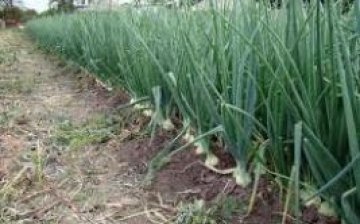Salad onion, growing
Most gardeners choose to grow salad onions instead of hot ones. Lettuce onions should be grown from seed in seedlings. Using the seedling method, you can get onions three weeks earlier than usual.
It is very convenient to grow onions using cassettes with cells. At the end of February, cells can be filled with a mixture of humus and sandy loam soil. Seeds should be poured between two damp cotton cloths, then wrapped in plastic and placed in a warm place. Seeds should be checked periodically.
When white roots about 1 millimeter long appear, the seeds must be transplanted into a cassette. In the cell of the cassette, you can plant 3 or 4 seeds. Seeds are sown to a depth of 2-2.5 centimeters. The remaining substrate is poured into the cells of the cassette to the very top, slightly compacted and its excess is removed. The crops must be watered and the cassettes must be placed under the foil again. The cassettes are placed in a warm place with a temperature of 20 degrees. The crops are periodically ventilated. After a while, the cassettes can be moved to a place with a lower temperature and the film can be removed from it. Crops need to be watered regularly so that the soil does not dry out.
Seedlings must be protected from diseases using special solutions. Before planting on the beds, the plants must be hardened in the fresh air. A thickened planting should be avoided. Onions can be planted in early April. After planting, onions need to be watered so that contact with the ground is more reliable.
Onions are watered often, but not very abundantly. Proper watering helps to improve the taste of the onion.




For the first time I learned that onions can be planted in the ground not by seeds, but by seedlings. The early harvest of onions is impressive with this method of planting. True, it will take a lot of cassettes to grow onion seedlings.